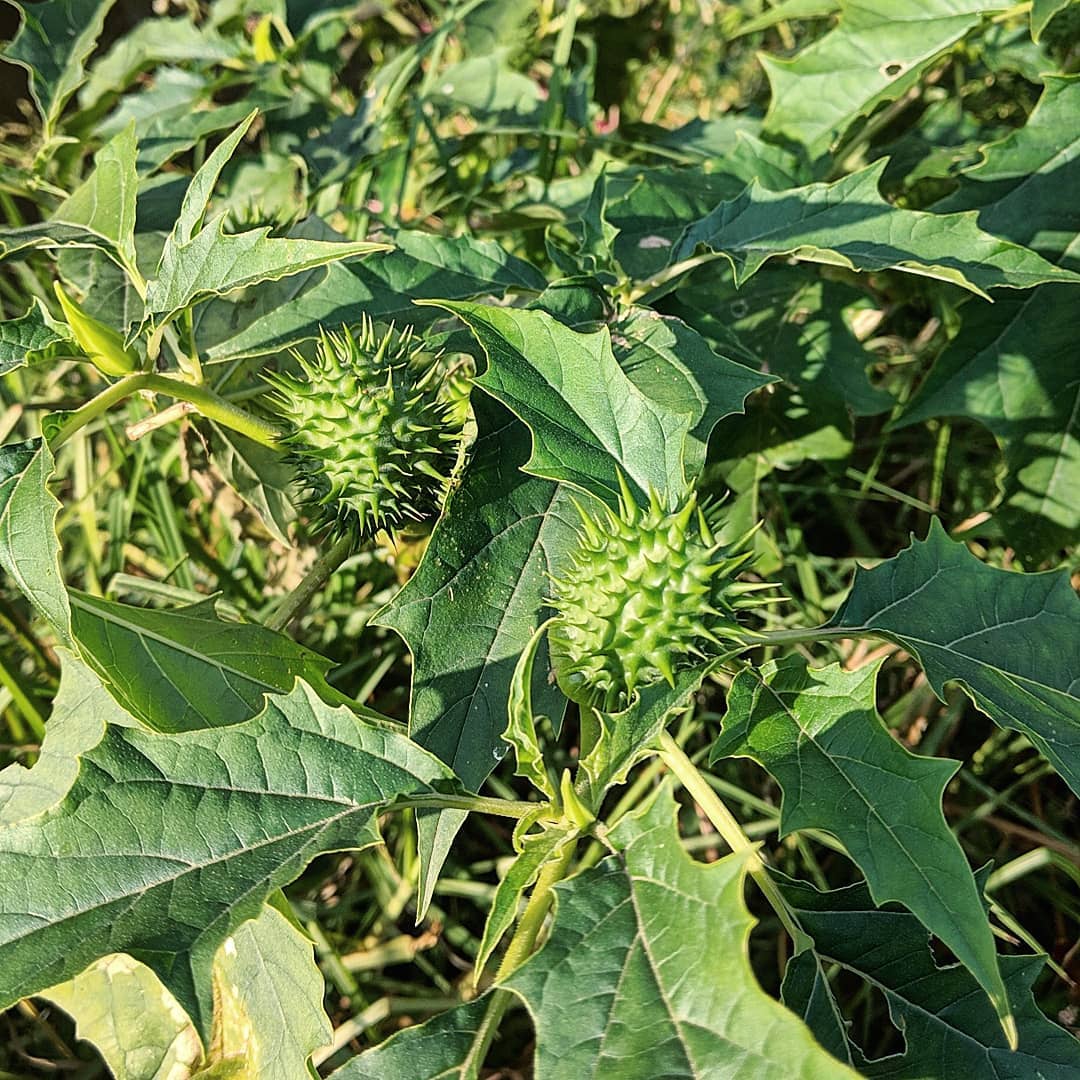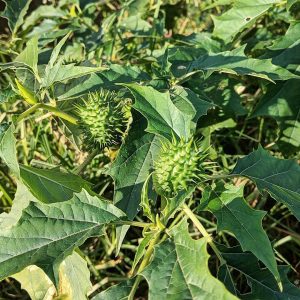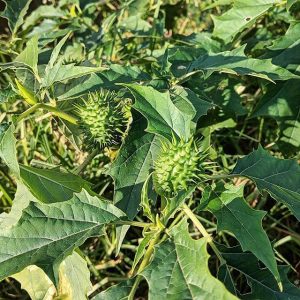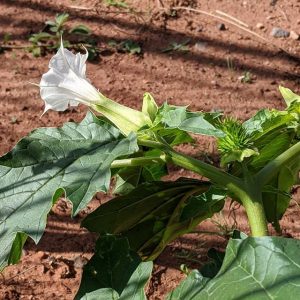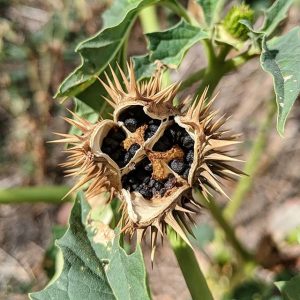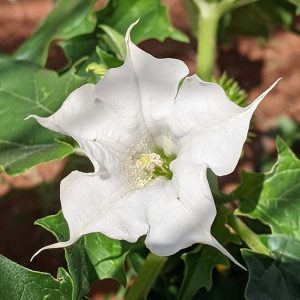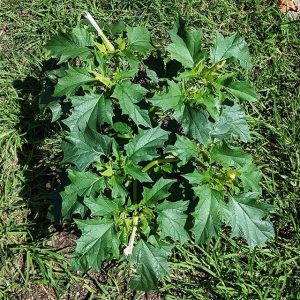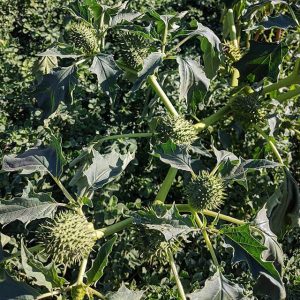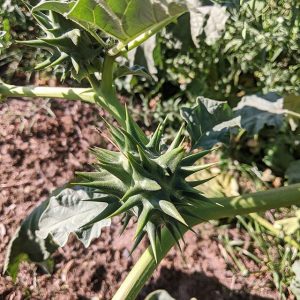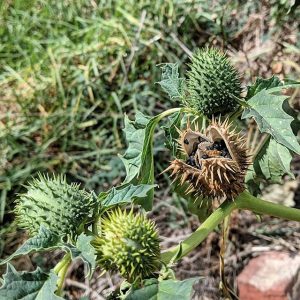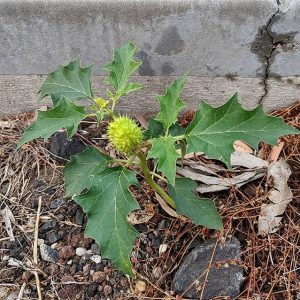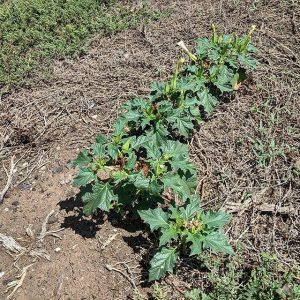Common Thorn-apple (Datura stramonium), a toxic annual member of the Nightshade family originating in C. America.
Also known as the Devils Trumpet, as James Town Weed or Jimsonweed, and apparently as ‘the cranky-seed’, for ‘the effects the seeds produced upon poultry when they have access to the plants.’ Old reports often confused the species origins, calling it native to England, Europe, India and the East Indies, on account of its early distribution and naturalisation through Spanish and British colonial networks.
Imported to Australia as a garden ornamental and a herbal narcotic, seeds of the plant were sometimes advertised for sale by colonial chemists to be grown for use as a sedative. Thorn-apple’s use as an asthma treatment (smoking the root, stems and leaves!) continued well into the 20th century.
By 1856 the species was reportedly ‘spreading very much’ in NSW, and raising concern for the risk it posed to children, with several poisonings reported across NSW, SA and Victoria in the 1850s and 1860s. ‘Common in waste places or among rubbish,’ botanical collections appear to have substantially lagged its reported spread, except in SA where several records were made in 1848.
In Victoria, the Australasian reported in 1868 that Thorn-apple ‘had become so common… as to be a perfect weed, and is to be found almost everywhere… Of late it has been treated like thistles, as a nuisance, in many places on account of children having been so frequently poisoned by eating the seeds of it.’ An 1870 report on the death of a two-year-old described the plant as one that ‘abound[ed] on the hills around Warrnambool and the district generally,’ with an odour that was ‘fetid and narcotic, occasioning headache and stupor.’ It was also associated periodically with cattle and horse deaths; in 1907 the plant was declared a thistle under Victoria’s Thistle Act.
It remains common of course, rising along Melbourne’s riparian and railway corridors, often as a solitary specimen deposited by birds but sometimes giving rise to small fleshy thickets where left unmanaged.
View Original Post on Instagram
Search for information about Datura stramonium in the Flora of Victoria
View information and occurrences of Datura stramonium on the Atlas of Living Australia
